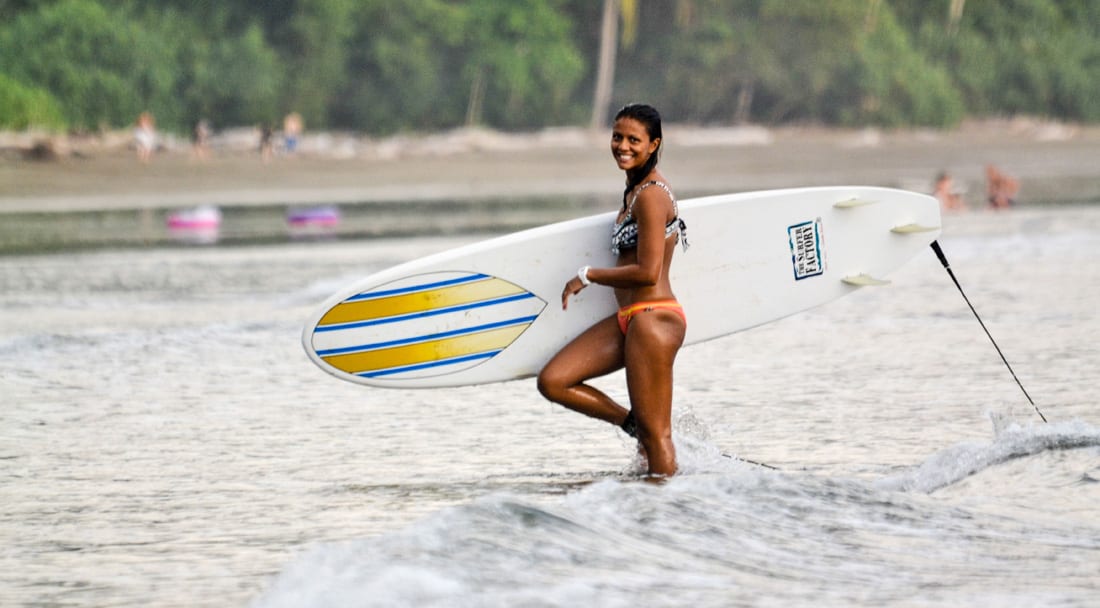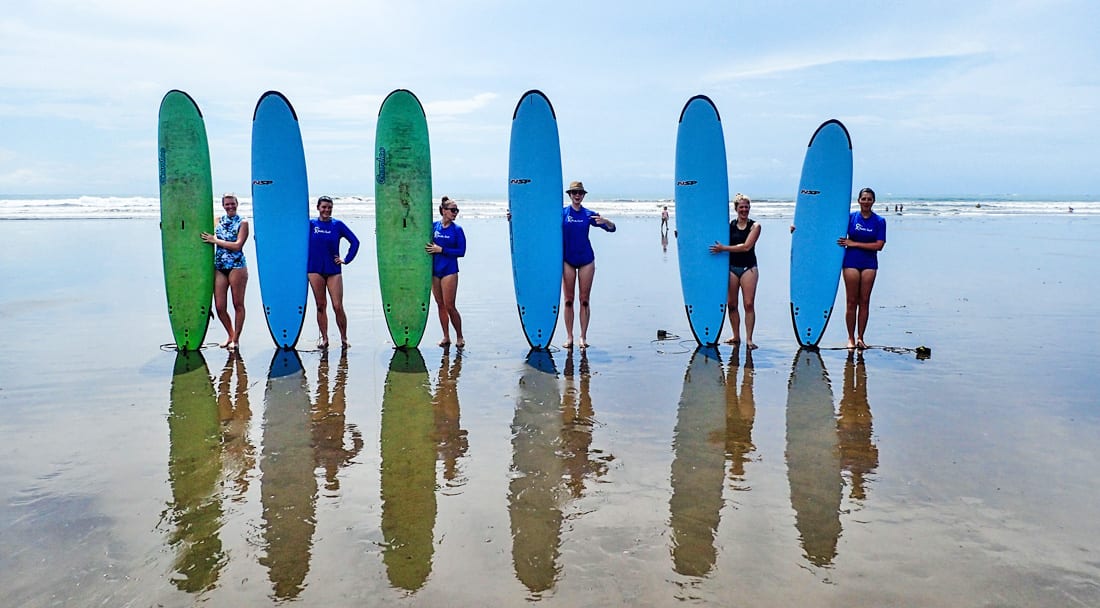As with any new activity you take up, there is always the build-up and excitement of getting some new “toys”. With surfing it’s no different, you will have to decide what surfboard to get. The first thing you’ll probably be inclined to do is research the latest and greatest surfboard technology, and the best surfboard shapers and brands. However, forget about that.
Surfboards for complete beginners
Complete beginners should consider starting out on a soft board, also known as a soft top, soft surfboard, or foam board (not to be confused with the polyurethane foam used for fiberglass surfboards). The greatest advantage for starting out on a softboard is safety, your own safety as well as those around you. New soft boards will run anywhere from $200 to over $400. However, your best bet is to grab a secondhand soft board, you can usually find them on Craigslist for around $100 and in good condition. Soft boards will usually be between 7 and 10 feet long, and you can use the following as a rough guideline:
- 7’-8’ soft board for individuals 140 pounds or less
- 8’-9’ soft board for individuals 140 – 180 pounds
- 9’-10’ soft board for individuals over 180 pounds
The bigger the board, the more flotation it will provide and the easier it will be to get comfortable paddling and standing-up on a surfboard.

Surfboards for beginners with some experience
If you have taken a few surf lessons or have some experience, and feel comfortable managing a surfboard in the water, then you’ll probably be better served by having a fiberglass surfboard. The ideal board size will vary according to each individual’s height, weight, and ability level, but taking the aforementioned guideline can be a good starting point (note: the board’s volume is what provides the flotation so it’s necessary to take into account other dimensions such as width and thickness). The trend has always been to go short, but most beginners never get past the initial stages because trying to learn on a shortboard becomes frustrating. Beginners need a surfboard with substantial volume in order to have the necessary flotation to help them progress during the initial phases, and while you may see surfers on extremely short boards and think it’s cool, this will not help you overcome the learning curve.
As with any other hobby or activity, we can’t help but find out what the “best” brands are. However, surfboards do not last forever, and during the learning process it is impossible for a beginner to notice a difference between how two surfboards perform, making the brand completely obsolete. Again, it is a good idea to look at buying your first few boards used. Surfboards are quite fragile and can take some time getting used to handling them with care, so save yourself some money and get something that works instead of something that “looks good”.
Rather than consider the brand, or make, of the surfboard, pay attention to the condition of it. If the board has turned a yellowish color it means the board has been exposed to the sun a lot. If there are soft spots, places where the fiberglass has come unattached from the foam. then the board either has a hole where water is seeping in or if it looks water-tight then the board had a ding and has become water-logged because the water was not allowed to dry-out before having the ding sealed.

Things To Take Away
In summary here are the most important points for beginners to take away from this post:
- Buy used
- Forget about brand, make, or shaper
- Condition of the surfboard is most important
- Don’t start out on a shortboard, no matter how cool you think it looks
If you are interested in learning how to surf, we urge you to, at the very least, take a lesson or two. In fact, we believe that it’s important to dedicate an entire week to learning — give you some skills and knowledge you wouldn’t get by teaching yourself and will help you on the path to having a safe and fun experience surfing. At Bodhi, we specialize in week-long intensive surf and yoga camps, the aim of which are to teach you the necessary skills and knowledge and have you perfect them under the watchful eye of a qualified surf instructor.
Get Step-by-Step Surf Lessons in Your Inbox
Learn to Catch Waves with our free 5-day email series from one of our lead surf instructors here at Bodhi Surf + Yoga.
Change the heading on the Separator tab ->
Search
Get Step-by-Step Surf Lessons in Your Inbox
Learn to Catch Waves with our free 5-day email series from one of our lead surf instructors here at Bodhi Surf + Yoga.
Change the heading on the Separator tab ->
Most Read Blogs
What is the Meaning of Anjali Mudra?
May 27, 2020
Fitness for Surfers: Workouts, Exercises & Training
February 10, 2022
The Best Places to Eat in Uvita, Costa Rica
May 19, 2022
How to Get From SJO to Costa Ballena, Costa Rica
May 31, 2018
Change the heading on the Separator tab ->
Categories
Categories
- Bodysurfing (5)
- Food (6)
- Responsible Business (6)
- Surfing (58)
- Travel (62)
- Yoga (38)
Change the heading on the Separator tab ->
Newsletter
Thanks for subscribing! Please check your email for further instructions.
Change the heading on the Separator tab ->
Follow Us
Bodhi Surf + Yoga
Change the heading on the Separator tab ->
Read more
A Typical Day: Bodhi Awaken the Inner Surfer
Words by George Frost
What does a typical day here at Bodhi Surf + Yoga look like? Well, that depends on which of our vacation packages you choose. We have a number of different options, each…
How to Overcome Fear and Push Your Limits in the Lineup
Words by Allison Mouret
Every surfer, regardless of their level or abilities, will eventually encounter fear in the sport. This is actually a humbling observation because for everyone, fear can be understood and accepted as a…
A Comprehensive Surfboard Fin Guide
Words by Carly Stoenner
Have you ever wondered how many meanings there are for the word “fin”? A few years ago, I asked my mom to bring me a new set of Futures fins when she…



